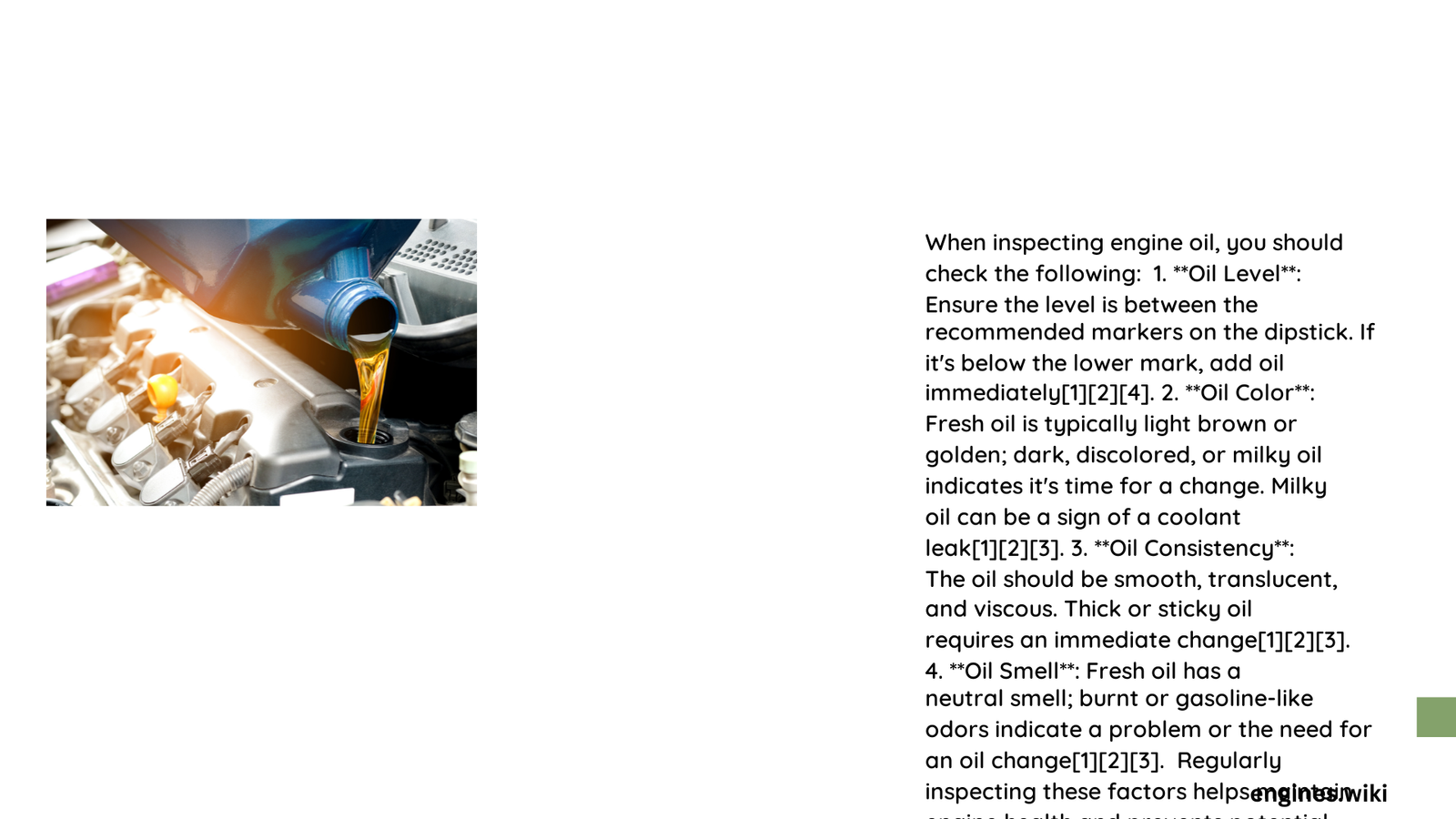Engine oil inspection is a critical diagnostic process that reveals the health of your vehicle’s most vital system. Proper examination involves multiple precise techniques that go beyond simple level checking, encompassing visual assessment, contamination detection, and performance evaluation. Mechanics and vehicle owners must understand the nuanced indicators that signal potential mechanical issues or impending maintenance requirements.
Why Is Accurate Oil Inspection Critical?
Engine oil serves as the lifeblood of your vehicle’s mechanical system, providing lubrication, cooling, and protection against wear. Comprehensive inspection helps prevent:
- Premature engine wear
- Potential mechanical failures
- Unexpected performance degradation
- Costly repair expenses
What Visual Characteristics Reveal About Engine Oil?
Color Indicators of Oil Health
| Color | Condition | Potential Implications |
|---|---|---|
| Amber/Translucent | Healthy | Normal Operating Condition |
| Dark Brown/Black | Aged | Requires Immediate Replacement |
| Milky/Foamy | Contaminated | Potential Coolant Leak |
| Gritty Texture | Degraded | Significant Internal Wear |
How to Perform Comprehensive Oil Level Check?
Precise oil level measurement requires systematic approach:
- Surface Preparation
- Park vehicle on completely level ground
-
Ensure engine is off and cooled (5-15 minutes)
-
Dipstick Examination
- Locate dipstick with bright-colored handle
- Remove and clean with lint-free cloth
- Reinsert fully, then withdraw
- Check oil level against marked indicators
What Contaminants Should Be Detected?
Primary Contamination Types
- Metal Particles: Indicates internal component wear
- Water Intrusion: Suggests potential gasket or seal failure
- Fuel Mixture: Signals potential combustion system problems
- Dirt/Debris: Demonstrates inadequate filtration
How to Assess Oil Viscosity?
Viscosity represents oil’s resistance to flow and critical performance characteristic:
- Multi-Grade Oils: Perform across temperature ranges
- Recommended Viscosity: Follow manufacturer specifications
- Temperature Impact: Affects oil’s protective capabilities
What Advanced Diagnostic Techniques Exist?
Professional Oil Analysis Methods
- Spectroscopic analysis
- Particle count evaluation
- Chemical composition testing
- Wear metal detection
Recommended Inspection Frequency
| Vehicle Type | Inspection Interval |
|---|---|
| Passenger Car | Every 3,000 miles |
| Heavy Duty Vehicle | Every 1,000 miles |
| High-Performance Vehicle | Monthly |
Pro Tips for Effective Oil Inspection
- Always use clean, lint-free cloth
- Check oil when engine is at consistent temperature
- Compare current condition with previous inspections
- Document findings for tracking
Warning Signs Requiring Immediate Attention
- Significant level drop between inspections
- Unusual color or consistency changes
- Presence of metallic particles
- Foaming or emulsification
Conclusion

Thorough engine oil inspection transcends simple level checking. It’s a comprehensive diagnostic process revealing your vehicle’s mechanical health, potential issues, and maintenance requirements.
